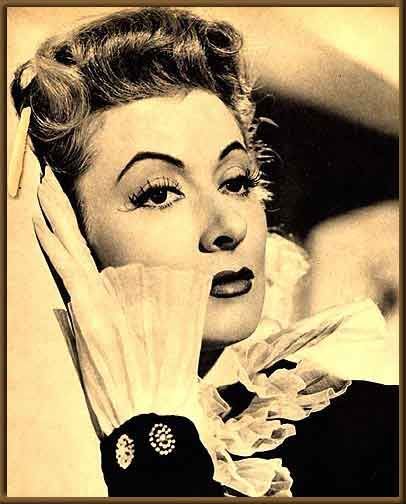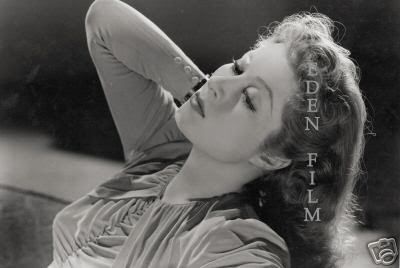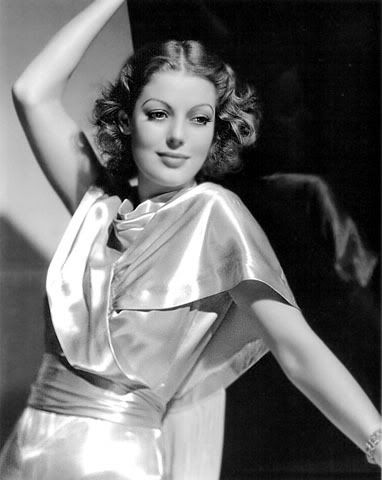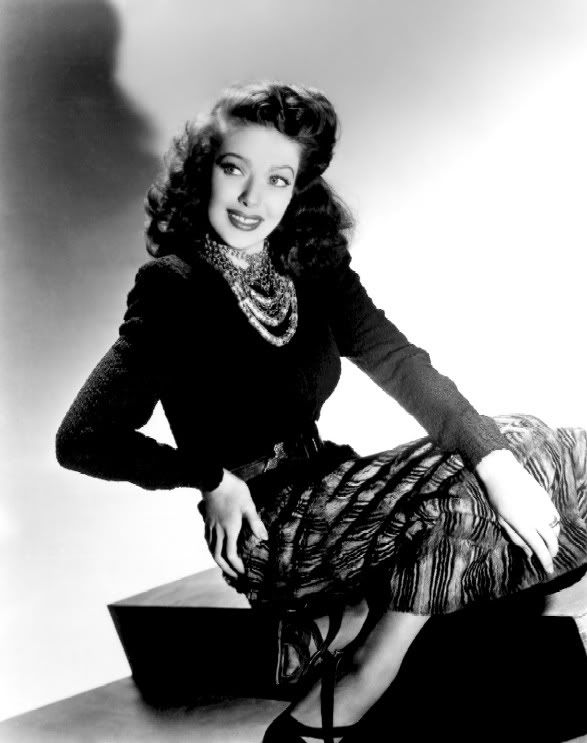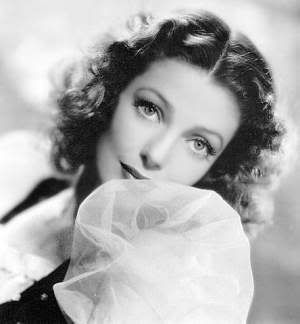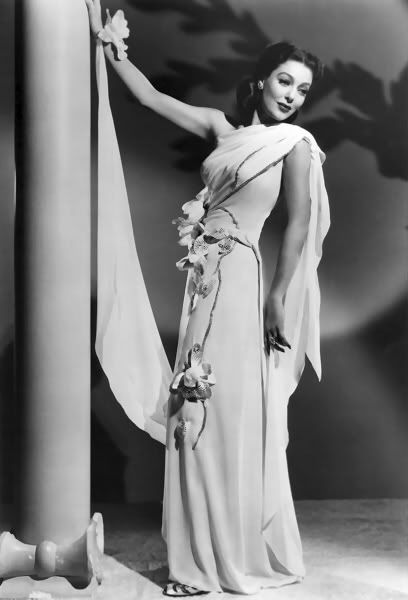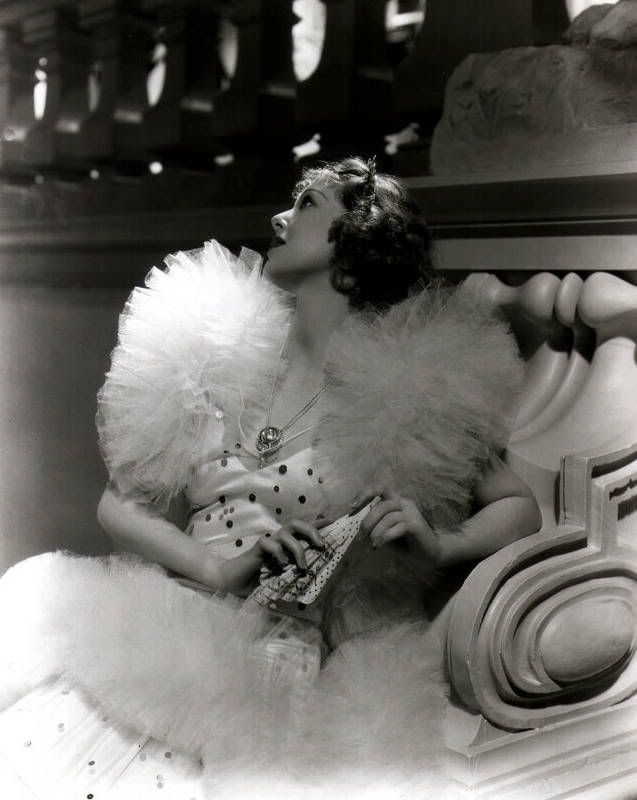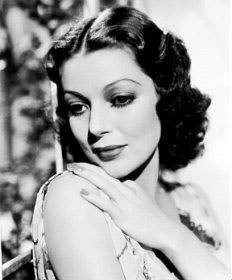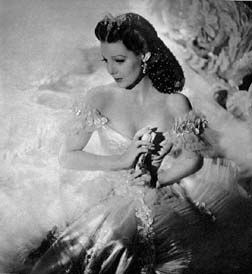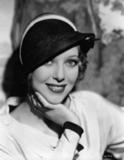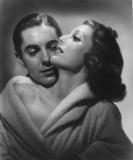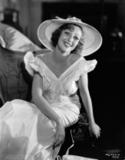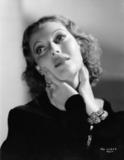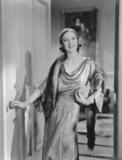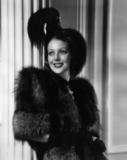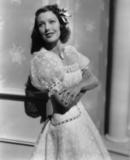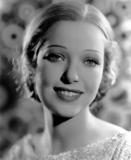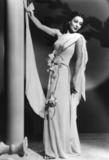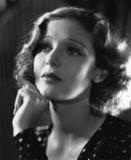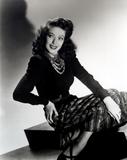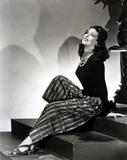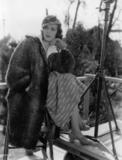Post by butterscotchgreer on Mar 20, 2008 7:57:10 GMT -5
A&E's Biography recently summed up Loretta Young this way: "She remains a symbol of beauty, serenity, and grace. But behind the glamor and stardom is a woman of substance whose true beauty lies in her dedication to her family, her faith, and her quest to live life with a purpose." That statement, in a nutshell, summed up Loretta who entered the world in Salt Lake City, Utah on January 6, 1913. Her parents separated when Loretta was three years old. Her mother moved the rest of the family to Southern California. Mrs. Young's brother-in-law was an assistant director and managed to get the young Loretta a small role in the film, The Only Way (1914). The role consisted nothing more than a small, weeping child lying on an operating table. Later that year she appeared in another small role in The Primrose Ring (1917). The film starred Mae Murray who was taken with the little Loretta. She even wished to adopt her, but Mrs. Young said no. Loretta did wind up staying with the Murrays for a year and a half. She would not be in another film again until 1921 when she had a brief scene in The Sheik (1921).
She and her sisters were educated in parochial schools. Afterwards she went back to helping her mother run the boarding house Mrs. Young started when they had first moved west. In 1927, Loretta returned to the silver screen in a small part in Naughty But Nice (1927). She was all of fourteen, but anxious to get started in a film career for real. As Denise Laverne in The Magnificent Flirt (1928), she began to shape any character she had with total dedication. It was the first of many outstanding roles for her. Later in the year she received second billing in The Head Man (1928). Loretta continued to toil in many roles as the 20s turned into the 30s. She was appearing in anywhere from six to nine films per year. Her two older sisters were also involved in the acting profession, but they weren't making as many films their younger sister was - Loretta's career overtook theirs early on. It seemed that Loretta's natural beauty was a distinct advantage for her. By the mid-30's Loretta had switched studios, leaving First National to go to rival Fox Studios. She had worked for Fox before, but only on a loan-out basis. It was at Fox that Loretta became one of the premiere leading ladies of Hollywood. In 1938, Loretta starred in Kentucky (1938) as Sally Goodwin. The film was an outstanding success. Although she was not nominated for an award, her co-star, Walter Brennan, won for best supporting actor for his role as Peter Goodwin. It was only a matter of time before Loretta would get the accolades she so deserved. By the time the 40s dawned, Loretta was still churning out quality films. Newcomers were now hitting the big screen, but Loretta's star never dimmed. She was still one of the most beautiful ladies in the film world. Loretta, finally, was given her due when she won an Academy Award for best actress in The Farmer's Daughter (1947), the tale of a farm girl who rises through the ranks and becomes a congresswoman. The film was a smash and one for which she is best remembered. With the win she had reached the pinnacle of her career. That same year, she starred in the delightful fantasy, The Bishop's Wife (1947)with David Niven and Cary Grant. It was a hit then as well as today. It continues to be a staple of television during the Christmas season. In 1949, Loretta starred in the well-received film, Mother Is a Freshman (1949) with Van Johnson and Rudy Vallee as well in Come to the Stable (1949). The latter film garnered her a second Oscar nomination. Unfortunately, she lost to the great Olivia de Havilland for her film, The Heiress (1949). In 1953, Loretta filmed It Happens Every Thursday (1953). It was to be her final performance on the big screen.
She entered the relative new medium of television. That year she started her TV series "Letter to Loretta" (1953). The show garnered with three Emmy Awards for Loretta. After that series' long run, she took a some time off before returning in 1962 with "The New Loretta Young Show" (1962). It didn't do as well, lasting only one season. Then for the next 24 years she didn't appear in any entertainment medium. Her final fling before the cameras was with a made for TV film called Lady in the Corner (1989) (TV). Loretta lived a quiet retirement in Palm Springs, California until her death on August 12, 2000 from ovarian cancer at the home of her sister Georgiana and her husband, Ricardo Montalban.
She and her sisters were educated in parochial schools. Afterwards she went back to helping her mother run the boarding house Mrs. Young started when they had first moved west. In 1927, Loretta returned to the silver screen in a small part in Naughty But Nice (1927). She was all of fourteen, but anxious to get started in a film career for real. As Denise Laverne in The Magnificent Flirt (1928), she began to shape any character she had with total dedication. It was the first of many outstanding roles for her. Later in the year she received second billing in The Head Man (1928). Loretta continued to toil in many roles as the 20s turned into the 30s. She was appearing in anywhere from six to nine films per year. Her two older sisters were also involved in the acting profession, but they weren't making as many films their younger sister was - Loretta's career overtook theirs early on. It seemed that Loretta's natural beauty was a distinct advantage for her. By the mid-30's Loretta had switched studios, leaving First National to go to rival Fox Studios. She had worked for Fox before, but only on a loan-out basis. It was at Fox that Loretta became one of the premiere leading ladies of Hollywood. In 1938, Loretta starred in Kentucky (1938) as Sally Goodwin. The film was an outstanding success. Although she was not nominated for an award, her co-star, Walter Brennan, won for best supporting actor for his role as Peter Goodwin. It was only a matter of time before Loretta would get the accolades she so deserved. By the time the 40s dawned, Loretta was still churning out quality films. Newcomers were now hitting the big screen, but Loretta's star never dimmed. She was still one of the most beautiful ladies in the film world. Loretta, finally, was given her due when she won an Academy Award for best actress in The Farmer's Daughter (1947), the tale of a farm girl who rises through the ranks and becomes a congresswoman. The film was a smash and one for which she is best remembered. With the win she had reached the pinnacle of her career. That same year, she starred in the delightful fantasy, The Bishop's Wife (1947)with David Niven and Cary Grant. It was a hit then as well as today. It continues to be a staple of television during the Christmas season. In 1949, Loretta starred in the well-received film, Mother Is a Freshman (1949) with Van Johnson and Rudy Vallee as well in Come to the Stable (1949). The latter film garnered her a second Oscar nomination. Unfortunately, she lost to the great Olivia de Havilland for her film, The Heiress (1949). In 1953, Loretta filmed It Happens Every Thursday (1953). It was to be her final performance on the big screen.
She entered the relative new medium of television. That year she started her TV series "Letter to Loretta" (1953). The show garnered with three Emmy Awards for Loretta. After that series' long run, she took a some time off before returning in 1962 with "The New Loretta Young Show" (1962). It didn't do as well, lasting only one season. Then for the next 24 years she didn't appear in any entertainment medium. Her final fling before the cameras was with a made for TV film called Lady in the Corner (1989) (TV). Loretta lived a quiet retirement in Palm Springs, California until her death on August 12, 2000 from ovarian cancer at the home of her sister Georgiana and her husband, Ricardo Montalban.



